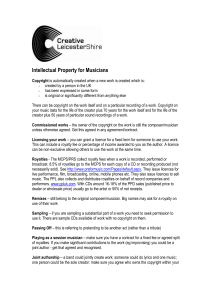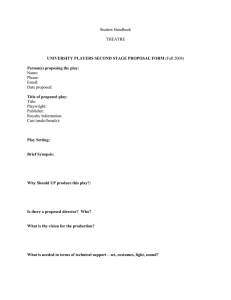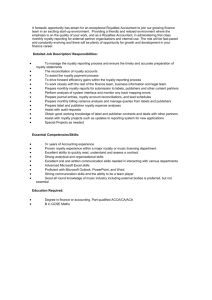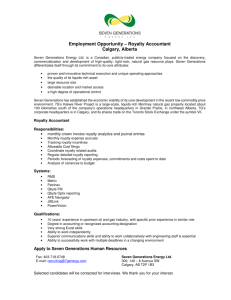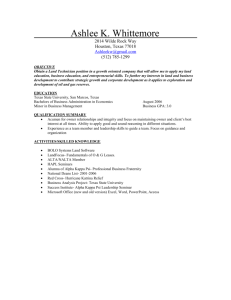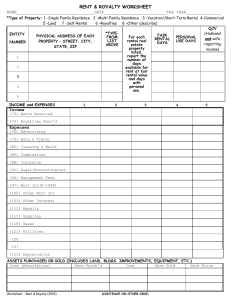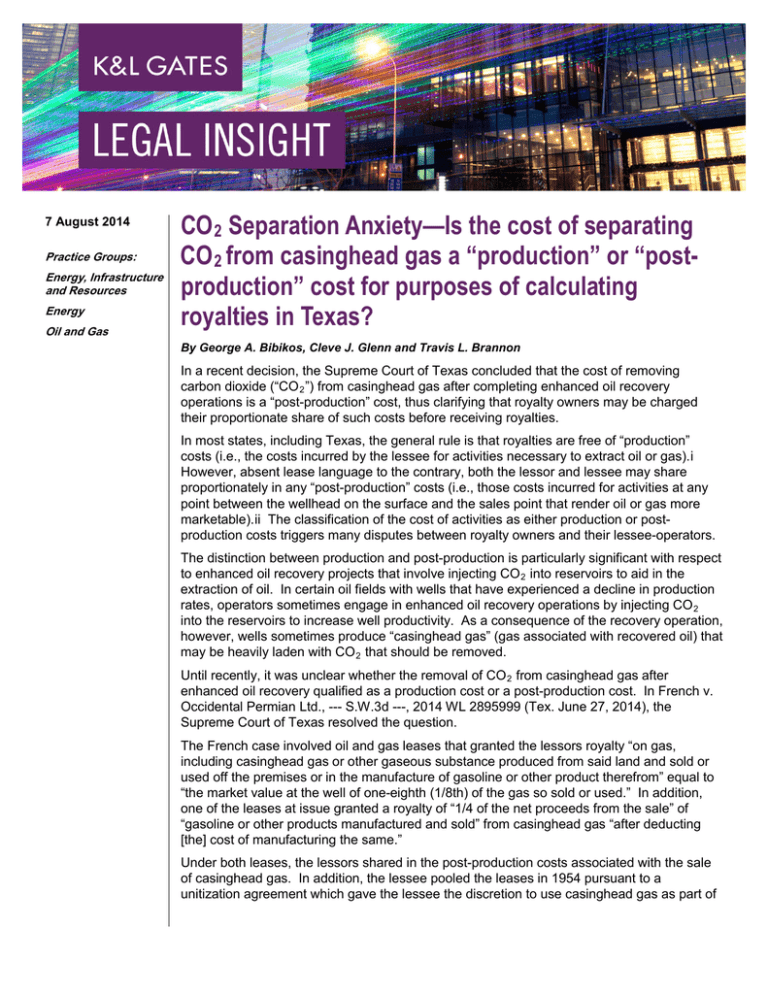
7 August 2014
Practice Groups:
Energy, Infrastructure
and Resources
Energy
Oil and Gas
CO 2 Separation Anxiety—Is the cost of separating
CO 2 from casinghead gas a “production” or “postproduction” cost for purposes of calculating
royalties in Texas?
By George A. Bibikos, Cleve J. Glenn and Travis L. Brannon
In a recent decision, the Supreme Court of Texas concluded that the cost of removing
carbon dioxide (“CO 2 ”) from casinghead gas after completing enhanced oil recovery
operations is a “post-production” cost, thus clarifying that royalty owners may be charged
their proportionate share of such costs before receiving royalties.
In most states, including Texas, the general rule is that royalties are free of “production”
costs (i.e., the costs incurred by the lessee for activities necessary to extract oil or gas).i
However, absent lease language to the contrary, both the lessor and lessee may share
proportionately in any “post-production” costs (i.e., those costs incurred for activities at any
point between the wellhead on the surface and the sales point that render oil or gas more
marketable).ii The classification of the cost of activities as either production or postproduction costs triggers many disputes between royalty owners and their lessee-operators.
The distinction between production and post-production is particularly significant with respect
to enhanced oil recovery projects that involve injecting CO 2 into reservoirs to aid in the
extraction of oil. In certain oil fields with wells that have experienced a decline in production
rates, operators sometimes engage in enhanced oil recovery operations by injecting CO 2
into the reservoirs to increase well productivity. As a consequence of the recovery operation,
however, wells sometimes produce “casinghead gas” (gas associated with recovered oil) that
may be heavily laden with CO 2 that should be removed.
Until recently, it was unclear whether the removal of CO 2 from casinghead gas after
enhanced oil recovery qualified as a production cost or a post-production cost. In French v.
Occidental Permian Ltd., --- S.W.3d ---, 2014 WL 2895999 (Tex. June 27, 2014), the
Supreme Court of Texas resolved the question.
The French case involved oil and gas leases that granted the lessors royalty “on gas,
including casinghead gas or other gaseous substance produced from said land and sold or
used off the premises or in the manufacture of gasoline or other product therefrom” equal to
“the market value at the well of one-eighth (1/8th) of the gas so sold or used.” In addition,
one of the leases at issue granted a royalty of “1/4 of the net proceeds from the sale” of
“gasoline or other products manufactured and sold” from casinghead gas “after deducting
[the] cost of manufacturing the same.”
Under both leases, the lessors shared in the post-production costs associated with the sale
of casinghead gas. In addition, the lessee pooled the leases in 1954 pursuant to a
unitization agreement which gave the lessee the discretion to use casinghead gas as part of
CO2 Separation Anxiety—Is the cost of separating CO2 from casinghead
gas a “production” or “post-production” cost for purposes of
calculating royalties in Texas?
its enhanced recovery operations.iii As is typical of many royalty clauses regarding gas use,
the parties agreed that no royalty would be paid on the use of such gas for operations.iv
The lessee in French initiated a tertiary recovery operation in 2001 to stimulate oil wells and
remedy the long decline in production in the oil field that included the leased properties at
issue. As a result of this process, the wells resumed economically viable production, and the
operator recovered oil that would have been lost otherwise. However, as a consequence of
the recovery operation, the wells produced casinghead gas that was heavily laden with CO 2 .
The lessee entered into an agreement with a third party, whereby the third party would
process the gas and extract a majority of the CO 2 . The lessee agreed to pay the third party
a monetary fee and an “in-kind” fee equal to 30 percent of the natural gas liquids and all of
the residue gas extracted from the stream. When the lessee paid royalties, it deducted the
value of the in-kind payment in proportion to the royalty owners’ interest as it would with
other post-production costs.
The royalty owners sued, alleging the lessee underpaid royalties by deducting the value of
the in-kind fee. They claimed that royalties should have been paid on all the gas that came
out of the well and not the gas remaining after the CO 2 was removed (which was a much
smaller quantity of gas).
The trial court agreed with the royalty owners and awarded $10.5 million in compensation for
underpaid royalties.
The Texas Eleventh Court of Appeals reversed the decision of the trial court and the $10.5
million judgment. Among other rulings regarding the sufficiency of expert testimony to
estimate market value of casinghead gas infused with CO 2 , the court treated the CO 2
extraction as a post-production activity that may be shared by the royalty owners. The court
reasoned as follows: “Because we have held that it is necessary to render the stream
marketable, we also hold that it is a cost of manufacturing that must be deducted in order to
determine the net proceeds from the sale, and thus the royalty.”v
The Supreme Court of Texas granted the royalty owners’ petition for review in January
2014vi on whether the costs of removing the CO 2 deducted by the lessee were properly
considered to be production costs or post-production costs.vii
Noting that the issue was one of first impression, the Supreme Court affirmed the appellate
court’s conclusion that the CO 2 separation is a post-production activity that may be shared
by royalty owners and lessees if the lease so provides. The court noted that the injected
CO 2 remained the lessee’s property and the royalty owners were entitled to a royalty based
only on the non-CO 2 portion of the casinghead gas.viii The court reasoned that, “under the
parties’ agreements, [the royalty owners], having given [lessee] the right and discretion to
decide whether to reinject or process the casinghead gas, and having benefitted from that
decision, must share in the cost of CO 2 removal.”ix As a result, the lessee properly
deducted the value of the in-kind payment from royalties.
CO 2 floods, and other enhanced recovery projects, are integral to the successful
management and production of valuable oil and gas resources in the state of Texas and in
other jurisdictions. The French decision clarifies how those costs should be treated when
calculating royalty payments pursuant to a lease that authorizes the parties to share in postproduction costs. The decision reflects the potential challenges that lessees may face when
2
CO2 Separation Anxiety—Is the cost of separating CO2 from casinghead
gas a “production” or “post-production” cost for purposes of
calculating royalties in Texas?
sharing costs with royalty owners for necessary operations that enhance the value of
production but do not fit neatly into the “production” category or “post-production” category.
In addition, while the issue may be resolved in Texas, the question remains open in other
jurisdictions. Lessees may wish to consider a review and analysis of their leases to identify
possible areas of dispute with royalty owners over proper cost-sharing for activities that fall
into a gray area between production and post-production.
Authors:
George A. Bibikos
george.bibikos@klgates.com
+1. 717.231.4577
Cleve J. Glenn
cleve.glenn@klgates.com
+1. 713.815.7327
Travis L. Brannon
travis.brannon@klgates.com
+1. 412.355.7443
Anchorage Austin Beijing Berlin Boston Brisbane Brussels Charleston Charlotte Chicago Dallas Doha Dubai Fort Worth Frankfurt
Harrisburg Hong Kong Houston London Los Angeles Melbourne Miami Milan Moscow Newark New York Orange County Palo Alto Paris
Perth Pittsburgh Portland Raleigh Research Triangle Park San Diego San Francisco São Paulo Seattle Seoul Shanghai Singapore Spokane
Sydney Taipei Tokyo Warsaw Washington, D.C. Wilmington
K&L Gates comprises more than 2,000 lawyers globally who practice in fully integrated offices located on five
continents. The firm represents leading multinational corporations, growth and middle-market companies, capital
markets participants and entrepreneurs in every major industry group as well as public sector entities, educational
institutions, philanthropic organizations and individuals. For more information about K&L Gates or its locations,
practices and registrations, visit www.klgates.com.
This publication is for informational purposes and does not contain or convey legal advice. The information herein should not be used or relied upon in
regard to any particular facts or circumstances without first consulting a lawyer.
© 2014 K&L Gates LLP. All Rights Reserved.
i
Heritage Res., Inc. v. NationsBank, 939 S.W.2d 118, 121-122 (Tex. 1996) (citing Martin v. Glass, 571 F.Supp. 1406, 1410 (N.D.Tex.
1983), aff'd, 736 F.2d 1524 (5th Cir. 1984)).
ii
Delta Drilling Co. v. Simmons, 338 S.W.2d 143, 147 (Tex. 1960).
iii
French, 2014 WL 2895999 at *2.
iv
Id.
v
Id. at 224.
vi
57 Tex. Sup. Ct. J. 154 (Jan. 15, 2014).
3
CO2 Separation Anxiety—Is the cost of separating CO2 from casinghead
gas a “production” or “post-production” cost for purposes of
calculating royalties in Texas?
vii
French, 2014 WL 2895999 at *1.
viii
Id. (citing Humble Oil & Refining Co. v. West, 508 S.W.2d 812, 816-19 (Tex. 1974) (holding natural gas stored in a reservoir to
prevent destruction of the field was not subject to a royalty interest upon its production with native natural gas).
ix
Id. at *7-8.
4

